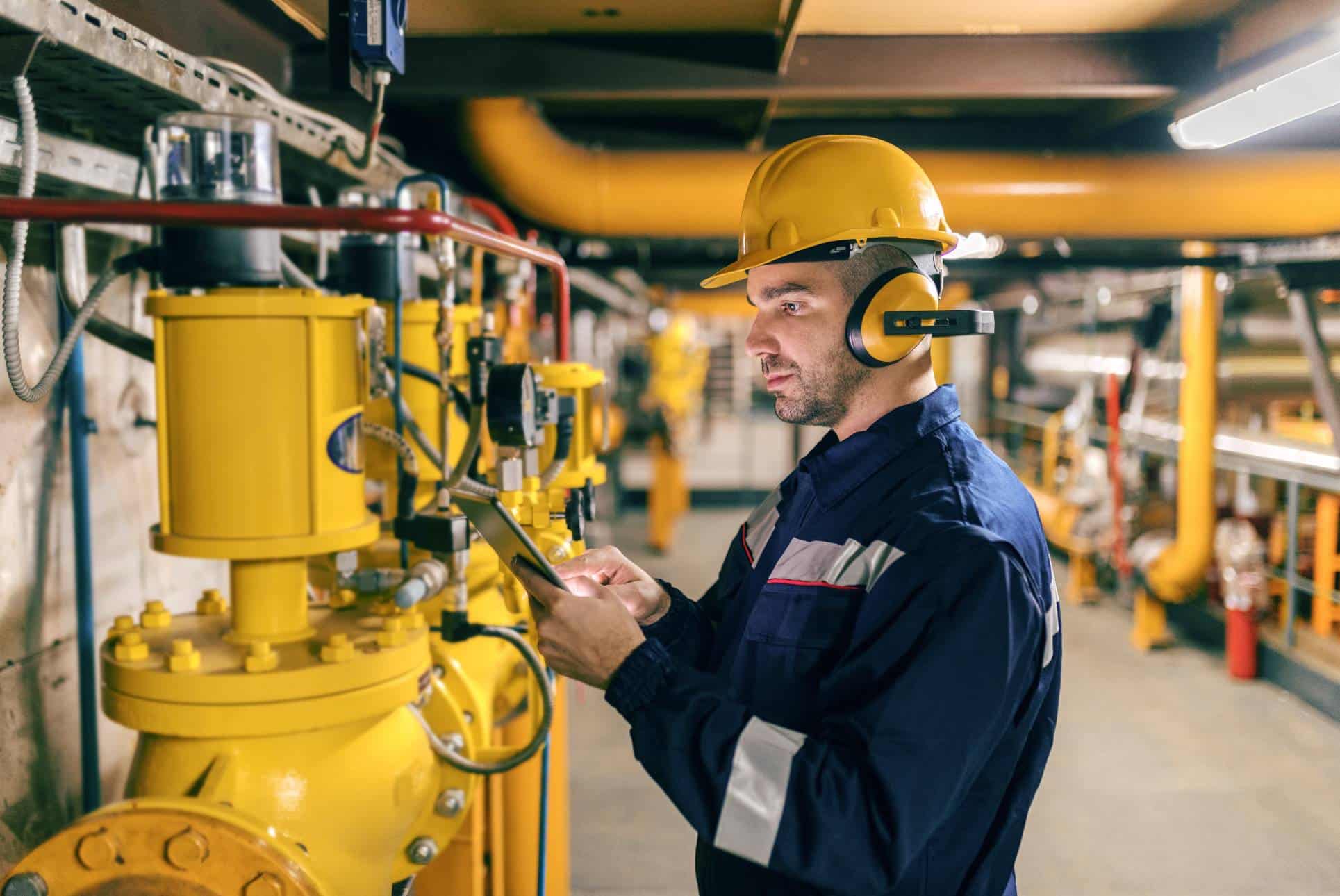As technology advances and industrial mechanization gives way to automation, control engineers become indispensable to the many companies competing for pole positions.
From what we wear and eat to how we get around, care for our elderly and sickly, or work and study — machines are increasingly occupying a bigger space in our daily lives. And yet this should come as no surprise given that throughout history, humans have always experimented with ways to make their day-to-day lives more efficient.
For example, in ancient times, most of the work was manual with the help of simple machines such as hand tools and sometimes working animals. And because everything eventually develops into different versions of itself, our ancestors’ simple tools resulted in the emergence of newer techniques, processes, and machines that ultimately paved the way for industrial automation to play a significant role in modern-day society.
But what exactly is industrial automation, and how have the different stages of its evolution advanced and improved the technologies we use today? Also, what are the pros and cons of it, and why are industry giants competing for the attention of automation engineers? Read on for answers to these questions and more.

Precisely What is Industrial Automation?
Experts herald this as the second step beyond mechanization in industrialization. However, manufacturing automation had already taken off in the mid-eighteenth century, when the Industrial Revolution saw new mechanical processes invented and implemented to increase production and decrease costs.
Although over time, control loops were eventually added — allowing for round-the-clock production — skilled workers remain necessary to most manufacturing processes and monitoring for quality control and equipment malfunctions.
Considering that automated systems can work 24 hours a day, earlier in its development, the purpose of automation was to increase productivity and to reduce the cost associated with human workers (such as wages and benefits). These days, however, the focus aims to improve quality and flexibility in the manufacturing process.
For example, in the car manufacturing industry, the installation of pistons into the engine was traditionally carried out manually by human workers but recorded an error rate of 1-1.5%. Now, with automated pieces of machinery, such as the robotic arm, this task consistently shows an error rate of 0.00001%.
Simply put, industrial automation uses control systems such as information technologies, computers, or robots to operate different machinery and processes in an industrial setting to replace human workers.
From 2010 through 2019, the installation of industrial robots has more than tripled, with over 380,000 robots now in use in factories around the world, according to GLG, a financial and global information services company. Singapore, South Korea, and Japan are leading in implementing robots per 10,000 manufacturing workers, followed by Sweden and Denmark. Europe and the U.S. are lagging, but they are rapidly increasing automation implementation.
Where The Growth Is Happening
Singling out those industries leading the way in robot usage and their methods helps gauge the future path of industrial automation. It can also help shed light on the career paths of engineering students.
The automotive industry is currently the biggest user of robotic equipment, making up 70% of the market. However, while the automotive sector dominates this space, other corporate and public sectors are increasingly upping their automation game. These include:
- Building and Construction: Besides the steady increase in 3D printed bridges and buildings, such as the world’s biggest 3D printed house in Saudi Arabia, there are robot systems that can build cobblestone streets, a skill that few humans now possess.
- Agriculture and Farming: Robots are not just fertilizing, planting, applying pesticides, and harvesting, but are also now able to detect defects in fruits and cracks in eggs or blood in the yolks.
- Retail and Hospitality: Again, 3D-printed meals and desserts have made their way to restaurant tables and into our tummies, but robots are now preparing and serving food. But it doesn’t stop there. In stores, they check inventory and even clean airports. And at the rate that artificial intelligence is growing in aeronautics, they will soon be flying our passenger planes.
- Healthcare and Medicine: The COVID-19 pandemic changed how we work remotely and resulted in the increased presence of robots in healthcare settings. We’ve seen how they can disinfect hospitals and interact directly with patients through various procedures. Machines are also carrying out the manufacturing and testing of prosthetic joints and limbs and orthopedic therapy.
How It’s Improved the Business Landscape
Many businesses needed to be faster to implement industrial automation tools before the COVID-19 pandemic and are now being forced to rethink their operations.
The ensuing pandemic restrictions meant workers often could not get to production sites — highlighting the importance of technologies that allow staff to access, monitor, operate, and service machinery, control systems, and other equipment safely and from a distance.
These industrial automation tools include everything from augmented-reality goggles and other wearable technologies to Industrial Internet of Things (IIoT) connectivity, advanced analytics, and cloud-based technologies, which improve how we monitor industrial operations.

With these technologies, supervisors can make data-driven decisions, adjust output more accurately, and improve real-time operational efficiency. And the best part is that it is all carried out remotely.
Meanwhile, data sharing and digital traceability technologies have vastly improved companies’ ability to gain visibility and transparency to authenticate the origin of parts and products across their value chains.
A recent article on the World Economic Forum website notes that “at a time when businesses are increasingly held accountable for the actions of suppliers and partners, this is now an indispensable way to build trust while making operations more resilient to potential supply issues.”
What It Means for Our Environment
The Fourth Industrial Revolution and the rapid uptake of digital and highly automated systems will transform our economies in unprecedented ways over the coming decades. So much so that the effects of this transformation are the subject of debate at the current World Economic Forum happening in Davos, Switzerland.
One thing is sure, advanced robotics, 3D printing, autonomous transport, the spread of artificial intelligence, and IIoT will change our world as we know it. But what impact will tools and technologies such as these have on our natural resources, energy use, and on the environment?
The International Institute for Sustainable Development (IISD) says that if carefully managed, changes in production and consumption patterns could create environmental improvements compared with the processes used today.
However, IISD also cautions that without proper environmental objectives and management systems, automation alone could have significant adverse effects — especially on energy use (and emissions generated from the current energy mix), resource use, and ecosystems. They could also significantly enhance the unsustainable exploitation of natural resources if our dependency on rare metals for producing electronics further deepens.
Klaus Schwab, the founder of the World Economic Forum, rightly noted that before we devise strategies to cope with the Fourth Industrial Revolution, we first need to understand it better.

The Demand for Industrial Automation Engineers
Besides ensuring increased production rates and productivity, more efficient use of natural resources, and improved safety and product quality on factory floors — industrial automation also has the potential to change our daily lives and the global environment for the better. Yet, none of this can be possible without investment in hardware, software, and skilled people.
More than skilled operators will be needed as automation moves forward. Control engineers will be in high demand as well. So, we must gear education systems to foster the necessary skills for the following age of automation.
If you are considering a career in engineering, there is currently a high demand for control engineers as industries push forward with the uptake of automation. But what makes these engineers so attractive, and what do they do?
ZipRecruiter defines controls engineers as professionals who help create the layout of mechanical control systems. They may help program an automation process, change existing programming when necessary, and help ensure the company uses the safest and most productive system possible for its needs. Control engineers may also create training documentation to show employees how to control and adjust their operations.
If you are considering a career change, the field of controls engineering is lucrative to explore. You can start by checking out EIT’s School of Industrial Automation, which will equip you with skills and expertise in the latest developing technologies in instrumentation, and process control, which is critical in this fast-moving work environment.
References:
Industrial Automation: Where the Growth Is:
https://glginsights.com/articles/industrial-automation-where-the-growth-is/
What is Industrial Automation?:
https://www.surecontrols.com/what-is-industrial-automation/
The Rise of Industrial Automation:
https://180engineering.com/the-rise-of-industrial-automation/
Why is Automation Engineers in Demand?:
https://www.linkedin.com/pulse/why-automation-engineers-demand-raul-verdusco/
What Effect Will Automation Have on the Environment?: https://www.iisd.org/articles/automation-environment
What Is an Automation Controls Engineer and How to Become One: https://www.ziprecruiter.com/Career/Automation-Controls-Engineer/What-Is-How-to-Become


